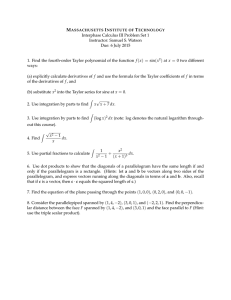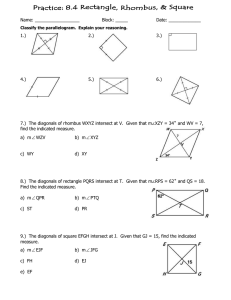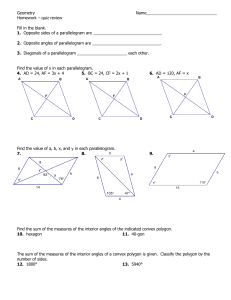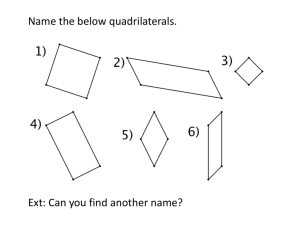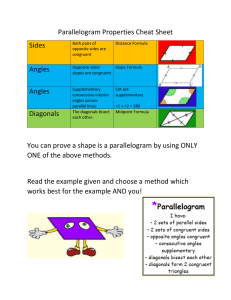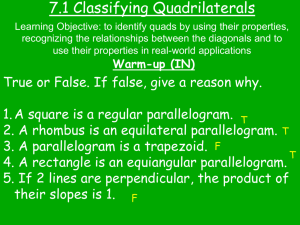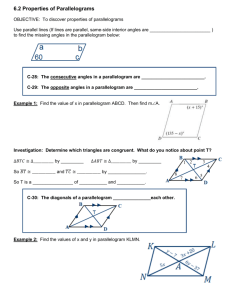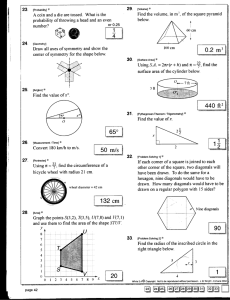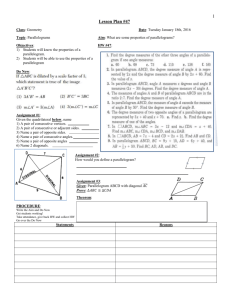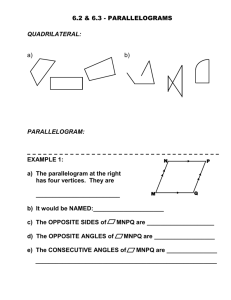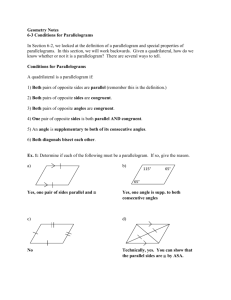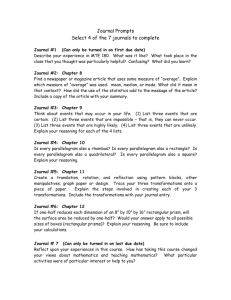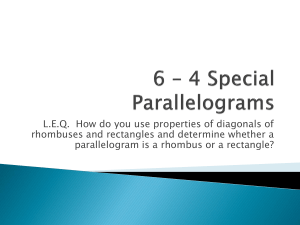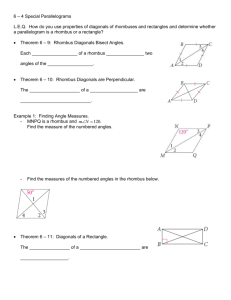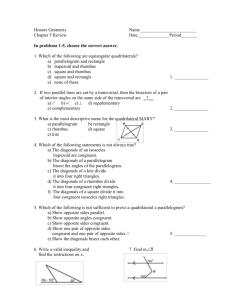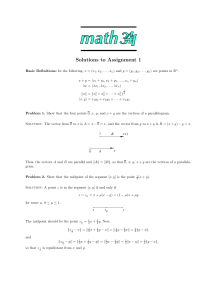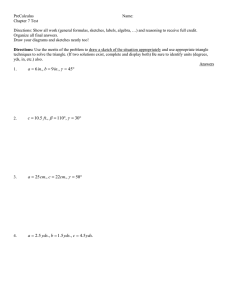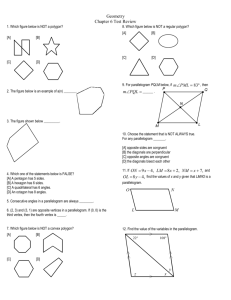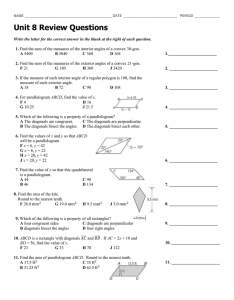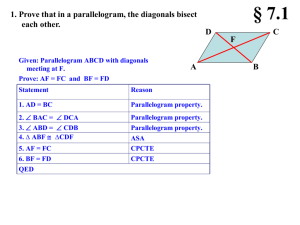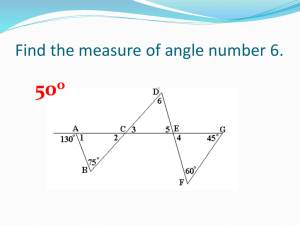Solutions to Exercises 12 by Sayani Bera 1. (a) z + ¯z = 1. If z = x + iy
advertisement
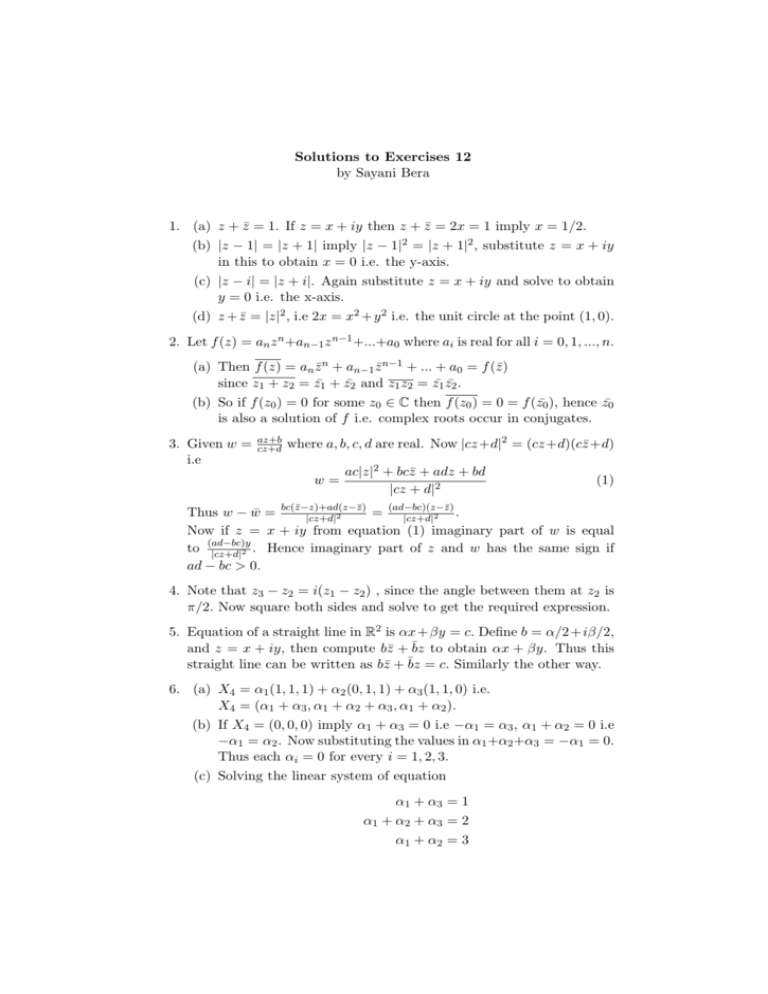
Solutions to Exercises 12 by Sayani Bera 1. (a) z + z̄ = 1. If z = x + iy then z + z̄ = 2x = 1 imply x = 1/2. (b) |z − 1| = |z + 1| imply |z − 1|2 = |z + 1|2 , substitute z = x + iy in this to obtain x = 0 i.e. the y-axis. (c) |z − i| = |z + i|. Again substitute z = x + iy and solve to obtain y = 0 i.e. the x-axis. (d) z + z̄ = |z|2 , i.e 2x = x2 + y 2 i.e. the unit circle at the point (1, 0). 2. Let f (z) = an z n +an−1 z n−1 +...+a0 where ai is real for all i = 0, 1, ..., n. (a) Then f (z) = an z̄ n + an−1 z̄ n−1 + ... + a0 = f (z̄) since z1 + z2 = z¯1 + z¯2 and z1 z2 = z¯1 z¯2 . (b) So if f (z0 ) = 0 for some z0 ∈ C then f (z0 ) = 0 = f (z¯0 ), hence z¯0 is also a solution of f i.e. complex roots occur in conjugates. 3. Given w = i.e az+b cz+d where a, b, c, d are real. Now |cz+d|2 = (cz+d)(cz̄+d) w= ac|z|2 + bcz̄ + adz + bd |cz + d|2 (1) Thus w − w̄ = bc(z̄−z)+ad(z−z̄) = (ad−bc)(z−z̄) . |cz+d|2 |cz+d|2 Now if z = x + iy from equation (1) imaginary part of w is equal to (ad−bc)y . Hence imaginary part of z and w has the same sign if |cz+d|2 ad − bc > 0. 4. Note that z3 − z2 = i(z1 − z2 ) , since the angle between them at z2 is π/2. Now square both sides and solve to get the required expression. 5. Equation of a straight line in R2 is αx + βy = c. Define b = α/2+ iβ/2, and z = x + iy, then compute bz̄ + b̄z to obtain αx + βy. Thus this straight line can be written as bz̄ + b̄z = c. Similarly the other way. 6. (a) X4 = α1 (1, 1, 1) + α2 (0, 1, 1) + α3 (1, 1, 0) i.e. X4 = (α1 + α3 , α1 + α2 + α3 , α1 + α2 ). (b) If X4 = (0, 0, 0) imply α1 + α3 = 0 i.e −α1 = α3 , α1 + α2 = 0 i.e −α1 = α2 . Now substituting the values in α1 +α2 +α3 = −α1 = 0. Thus each αi = 0 for every i = 1, 2, 3. (c) Solving the linear system of equation α1 + α3 = 1 α1 + α2 + α3 = 2 α1 + α2 = 3 2 we get α1 = 2, α2 = 1, α3 = −1. 7. If A = a1 + ia2 and C = c1 + ic2 then by law of addition B = (a1 + c+1 ) + i(a2 + c2 ) thus 12 B = A + 12 (C − A). Note that A + 12 (C − A) is the mid point of the diagonal joining A and C. So the geometric property of parallelogram following from this equation is The diagonals bisects each other. 8. If X = (1, 0),Y = (0, 1) and Z = (0, 2) then X.Y = X.Z = 0 but Y ̸= Z and X ̸= 0.. Hence the statement is not true when n ≥ 2. 9. Suppose X.Y = 0 for every Y and X ̸= 0 then if X = (a1 , a2 , ..., an ) then choose Y = (a1 , a2 , ..., an ) and Y ̸= 0. Then X.Y = a21 + a22 + ... + a2n ̸= 0. Which is a contradiction! 10. Let A = (a1 , a2 , ..., an ), B = (b1 , b2 , ..., bn ), then ∥A + B∥2 + ∥A − B∥2 = Σni=1 (ai + bi )2 + (ai − bi )2 = Σni=1 2(a2i + b2i ) = 2(∥A∥2 + ∥B∥2 ). In case of R2 note that ∥A + B∥ and ∥A − B∥ are the length of the diagonals of the parallelogram formed by the vectors A and B from origin. So this identity proves that in a parallelogram sum of squares of the length of the diagonals is twice the sum of squares of the length of the two sides.
